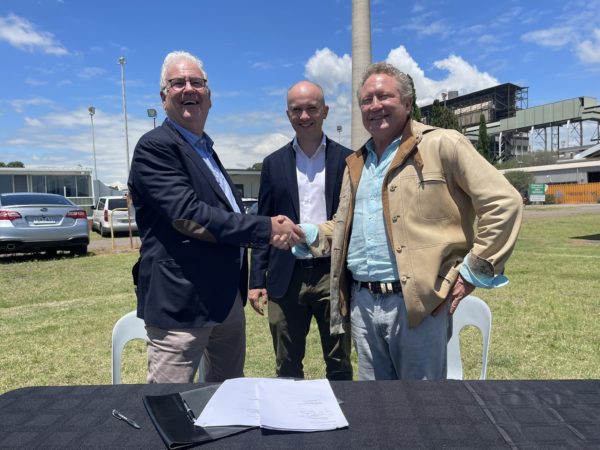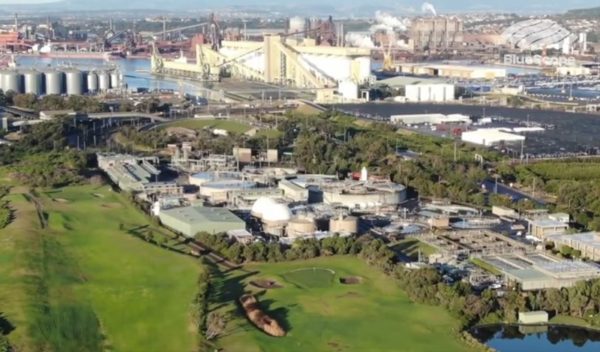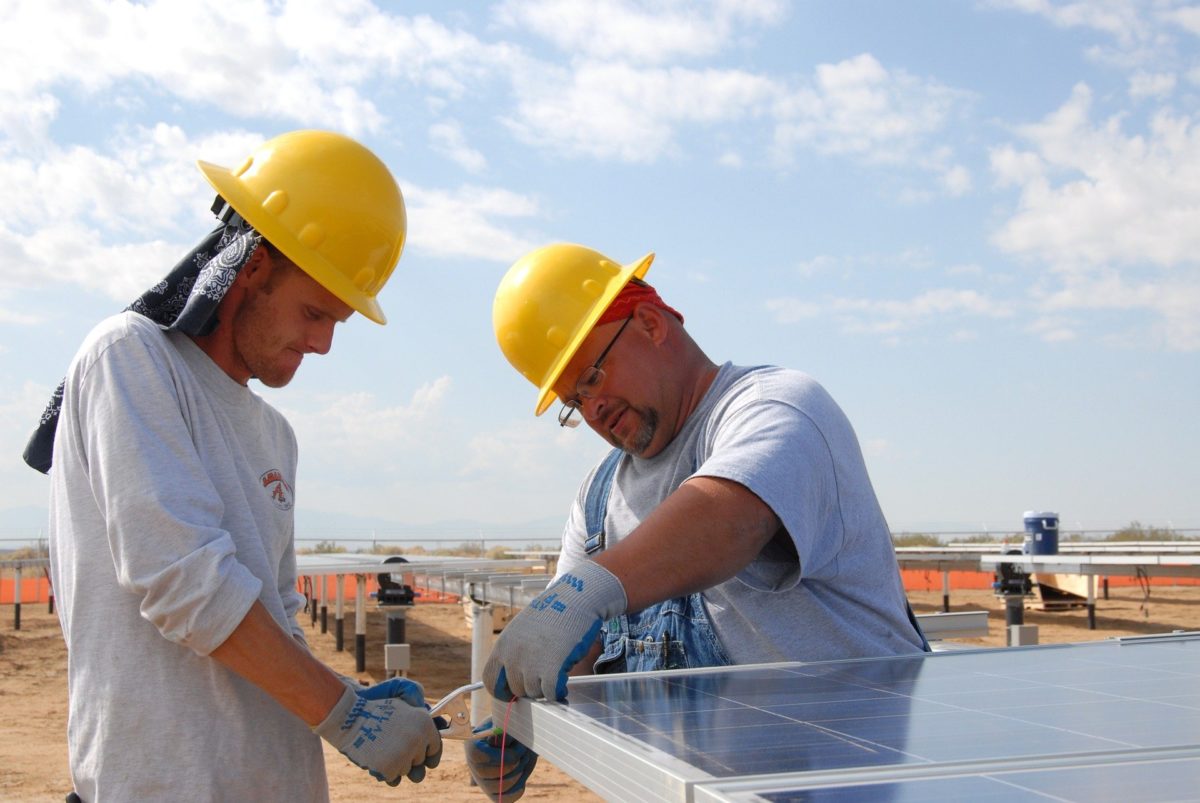With Australia’s biggest coal plant Eraring now closing in just three years time, and its remaining fleets looking increasingly unlikely to survive to their official use-by dates, Australian governments are introducing measures to ensure fossil fuel communities can replace their income and that new renewable industries have enough trained personnel to keep up with growth.
While the federal government expects a net gain of 62,000 new regional jobs as part of Australia’s 2050 net zero target, independent analysis has raised alarms that the swap from ‘dirty’ to ‘clean’ generation will hardly be neat and equitable without serious planning.
On this front there have been new developments in the past week, and many this year.
Inaugural Australian Energy Employment Report
The federal government has committed to delivering Australia’s first national energy workforce survey. The inaugural Australian Energy Employment Report (AEER), as it will be called, is intended to help both industry and government to avoid skills shortages and capture economic opportunities in the transition.
The report will adopt the US “gold standard” methodology for counting energy sector jobs, and will expand to include energy management across the whole economy.
The report was recommended in October last year by the Energy Efficiency Council and UTS Institute for Sustainable Futures, with the support of the Australian Power Institute, Clean Energy Council, and Ai Group, in its ‘RACE for 2030’.
The AEER is expected to be a biennial release.
Victorian government encourages women’s entry
Like the fossil fuel industries before it, the renewable energy sector remains male dominated. On Sunday, Victoria’s energy minister Lily D’Ambrosio announced her government would be subsiding apprenticeships, professional mentoring, and access to ongoing education to lift the number of women participating in the renewables industry through its $11 million ‘Growing our Clean Energy Workforce’ package.

Image: Facebook, Lily D’Ambrosio MP
Women make up less than 1% of electricians, solar designers and installers, and licensed electrical inspectors. To drive up this startlingly low figure, the Victorian government will subsidise 50% of the cost of new apprenticeships to help women enter the industry and provide apprentices a tool allowance along with six-monthly incentive payments.
These apprenticeships will be managed by Ai Group Apprentice Training Centre and Apprenticeships Group Australia.
NSW government’s ‘manufacturing renaissance’ package
Announced in the second half of February, the New South Wales energy minister Matt Kean responded to the news of Eraring’s expedited closure with a $250 million clean energy jobs package built to open up new opportunities as old generators close.
The Renewable Manufacturing Fund, as it’s named, seeks to create 3,700 roles in clean industries and spark what Kean called a “manufacturing renaissance.”

Twitter/Jemma Pepper
2,700 of those jobs would be in the construction of transmission infrastructure needed to connect the state’s renewable energy zones and new renewable generation sources.
Another 500 job are expected to come from the boost in local manufacturing of renewable technologies like wind towers, electrolysers and batteries, for which the NSW government has set aside funds. The final 500 new roles will come from green hydrogen industries via programs the state government established with its net zero strategy.
BlueScope Steel, Australia’s largest steel producer which has its base in Port Kembla – traditionally a coal hub and soon to be among the state’s first hydrogen hubs – came out in support of the package, saying he expected tens of thousands more jobs would be created downstream.

Image: BlueScope
“The potential opportunity for local manufacturers in relation to NSW’s Renewable Energy Zones is enormous – several hundred thousand tonnes of steel, around $1.5 billion of fabricated products, and almost 20,000 jobs,” BlueScope’s Managing Director & CEO, Mark Vassella, said.
“However, that opportunity won’t be realised unless industry and government invest together and coordinate their best efforts. Currently there is a lack of local manufacturing capability, and recent wind farm projects alone in NSW have seen over $200 million of components fully imported – a great opportunity lost.” Vassella said companies like BlueScope are willing to coordinate and co-invest to help grow local manufacturing.
Jobs lost, jobs gained
Compared to coal fired power plants, renewable energy jobs are primarily in the construction rather than ongoing generation of energy. While this has caused widespread concern, it seems almost universally understood today that domestic policies or stalling won’t be able to save coal-based roles.
The transition is unstoppable and all our governments can do is put strategies in place to make the transition clearer.
Back in January, Centre for Policy Development reached much the same conclusion, but flagged that between 100,000 to 300,000 regional jobs would be in jeopardy. Just a handful of areas would bear most of this, with ten local government areas (LGAs) predicted to account for around a third of all affected jobs. Those areas were primarily in central Queensland’s Bowen Basin, the Upper Hunter in NSW, and the Pilbara in Western Australia.
In terms of jobs gained, Blueprint Institute in February released a report which concluded approximately 6,200 new jobs in renewable energy projects will be created in South-West Queensland. Of these, nearly 1,000 would be permanent, long-term positions.
Last year, Community group Solar Citizens released a report using modelling from the Australian Energy Market Operator to show 43,500 clean energy job years would be created in Queensland alone under its Step Change scenario, which has since become the operator’s central scenario.
The federal government, when it released its somewhat underwhelming net zero 2050 “strategy” ahead of the COP26 climate summit, said it expected a net gain of 62,000 jobs for regional communities.
Worldwide, renewable energy employment worldwide reached 12 million in 2021, up from 11.5 million in 2019, according to the eighth edition of Renewable Energy and Jobs: Annual Review 2021.
While it’s clear renewables will open up a whole arena of new jobs, it would be untrue to suggest it will be a ‘like for like’ swap for energy workforces. The nature of the work, alongside the fact that its workforces won’t have decades, centuries even, of union negotiations to sweeten their conditions, will mean big changes are coming – and for some, they are already here.
This content is protected by copyright and may not be reused. If you want to cooperate with us and would like to reuse some of our content, please contact: editors@pv-magazine.com.









By submitting this form you agree to pv magazine using your data for the purposes of publishing your comment.
Your personal data will only be disclosed or otherwise transmitted to third parties for the purposes of spam filtering or if this is necessary for technical maintenance of the website. Any other transfer to third parties will not take place unless this is justified on the basis of applicable data protection regulations or if pv magazine is legally obliged to do so.
You may revoke this consent at any time with effect for the future, in which case your personal data will be deleted immediately. Otherwise, your data will be deleted if pv magazine has processed your request or the purpose of data storage is fulfilled.
Further information on data privacy can be found in our Data Protection Policy.